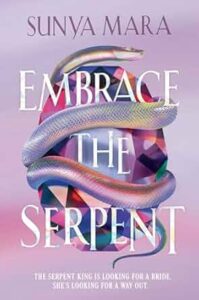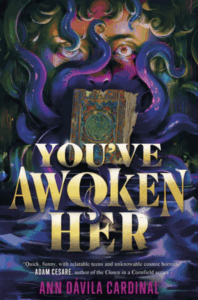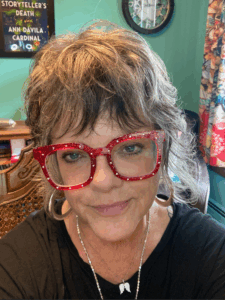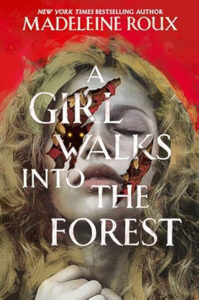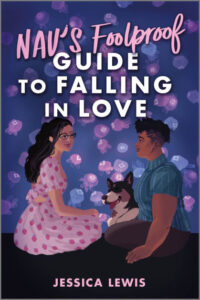“Co-Authoring a Novel”
The number one question that we get asked when we do book events is: how do you co-author a novel?
Even now, over a decade since our first co-authored novel hit the shelves, we find ourselves a little baffled by the ubiquitousness of that question. We get asked it at every event, in every interview, whether we’re talking about a co-authored book or one we’ve written solo. For us, writing together comes so naturally that we find the fascination with the process a bit confusing. At first, we even struggled to answer reader questions on that front because we couldn’t quite figure out why people kept asking us that question.
“But what happens when you disagree?” asked one reader, insistent. “Which one of you has the final say?”
We just eyed each other across the signing table, realizing that we had no answer for that. We never disagree.
To those of you now reading on with some skepticism: yeah, you’re not wrong. Of course we disagree, but the point is we never disagree in ways that put us on opposite sides of an issue. We actually learned very early on in writing our first book together that if we disagreed about what should happen next in our story, or what a character would say, or how the relationship arc would go, what was actually happening was that we were both wrong. Or, rather, we were both right—but going about listening to our instincts the wrong way. Amie thinks it has to be A, Meg thinks it’s obvious that it should be B – what’s really going on is that we’ve both missed the fact that the right answer is really the hidden, secret option C.
For instance, Amie might think the next scene ought to be full of action, but Meg thinks it ought to be a romantic scene. It’s not because one of us is wrong and one of us is right, it’s because actually what we’re picking up on is that neither of us has the perfect next scene. So we talk about why Amie feels the need for a fight scene—we need to see the characters showing off their strengths, perhaps—and why Meg feels more pulled toward romance—because we need to see the characters becoming closer, and cementing their bond. And it turns out that the perfect scene for both those things is actually a scene where they confront an obstacle together in a way that binds them and shows them being good at what they do.
Writing with a partner in a full, 50/50 split of the responsibilities requires the ability to set aside ego in favor of the book. It took us many years to figure out why this seemed to come naturally when it struck so many others, usually budding artists and young writers themselves, as strange. “I could never do that,” we keep hearing from readers. “Give up control that way!” But the truth is that any good, healthy relationship between friends (or anyone, really) demands that you value the strength of your connection over whatever project you might be embarking upon. From the very beginning, we always said that if writing together ever started threatening our friendship, we would simply stop. The friendship mattered most.
When we began writing Lady’s Knight, Amie suggested that we try a new way of outlining the book. Meg was a bit resistant to it, because that’s not how we’d worked before, and it wasn’t what came naturally to her, but we gave it a go and it turned out to be the perfect way of approaching this book. With the plot largely decided upon in advance, it meant that we could pour ourselves into the joyful anachronistic world-building, witty dialogue, and pretty much every joke we’ve ever wanted to put into a book we were writing.
Each book is a little different in terms of how we go about writing it, but Lady’s Knight was an exercise in joy and healing from the very beginning. Conceived of during the height of the pandemic, when we were all confined to our homes and wondering how many years it would be before we could see our loved ones in person again, this book just became our happy place. We’d call each other from opposite sides of the planet, bursting with ideas and jokes, laughing and writing them down as fast as we could.
We wrote about a girl who dreams of being a knight, and a noblewoman who finds herself put up as the prize for a tournament—and rather than waiting for someone to save her, she decides to engineer her own salvation. Each of the girls learn a lot about themselves, during the adventure that ensues. We learned a lot about ourselves, writing them.
We wrote this book to delight each other—whether it was breakfast on the balcony with plates of delicious pastries, a makeover scene with incredible fashion, a breathless rush through the castle after a falling-out, or the satisfaction of skewering a sexist old man (only verbally, don’t worry), we always came back to what we loved. We told a story from our hearts, and in pursuit of joy.
There’s a beautiful merging of egos, when you write something with someone you deeply trust, and even though this was our eighth book together, there was still a special kind of magic as we watched all our ideas merge into a very special “secret option C.” This book ended up being the best of both of us, and a love letter to our friendship, and it was such fun to write.
Published June 3rd, 2025 by Storytide
About the Book: An undeniably fierce, unforgettably funny, unapologetically queer feminist romp through the England of medieval legend. Bestselling and acclaimed authors Amie Kaufman and Meagan Spooner bring readers along on an epic quest for valor, freedom, and, above all, love. A Knight’s Tale meets the Lady Jane series, with a dash of The Great!
Gwen is sick of hiding—hiding the fact that she’s taken over her father’s blacksmithing duties, hiding her attraction to girls, hiding her yearning for glory as a knight.
Meanwhile, Lady Isobelle of Avington, queen bee of the castle, has never once considered hiding who she is—until now. She’s been chosen as the grand prize in the Tournament of Dragonslayers, to be given to whichever knight can claim her hand. And for the first time in her life, she can’t talk her way out of trouble.
When Isobelle discovers Gwen’s knightly ambitions, they hatch a scheme together—Gwen will joust in the tournament, disguised as Sir Gawain. Winning means freedom for Isobelle, and glory for Gwen. Losing means… well, let’s not go there.
One thing’s for sure: Falling in love was never the plan.
But the best laid plans…are often trampled all over by dragons.
About the Authors: Amie Kaufman is a New York Times and international bestselling author of young adult and middle grade fiction and the host of the podcast Amie Kaufman on Writing. Her multi-award-winning work is slated for publication in over thirty countries and has been described as “a game-changer” (Shelf Awareness), “stylistically mesmerizing” (Publishers Weekly), and “out-of-this-world awesome” (Kirkus Reviews). Her series include the Illuminae Files, the Aurora Cycle, the Other Side of the Sky duology, the Starbound trilogy, the Unearthed duology, the Elementalstrilogy, and The World Between Blinks. Her work is in development for film and TV and has taken home multiple Aurealis Awards, an ABIA, and a Gold Inky, made multiple best-of lists, and been shortlisted for the Prime Minister’s Literary Awards. Raised in Australia and occasionally Ireland, Amie has degrees in history, literature, law, and conflict resolution and is currently undertaking a PhD in creative writing. She lives in Melbourne with her husband, daughter, rescue dog, and an extremely large personal library. Learn more about her and subscribe to her newsletter at amiekaufman.com.
New York Times bestselling author Meagan Spooner grew up reading and writing every spare moment of the day while dreaming about life as an archaeologist, a marine biologist, or an astronaut. She graduated from Hamilton College in New York State with a degree in playwriting. She’s traveled all over the world, to places such as Egypt, Australia, South Africa, the Arctic, Greece, Antarctica, and the Galápagos Islands, and there’s a bit of every trip in every story she writes. She currently lives and writes in Asheville, North Carolina, but the siren call of travel is hard to resist, and there’s no telling how long she’ll stay there. She’s the author of Hunted and Sherwood and the coauthor of the award-winning Starbound Trilogy (These Broken Stars, This Shattered World, Their Fractured Light) and the Skylark Trilogy (Skylark, Shadowlark, Lark Ascending). In her spare time she plays guitar, plays video games, plays with her cat, and reads. meaganspooner.com
Thank you, Amie & Meagan, for sharing your process!




